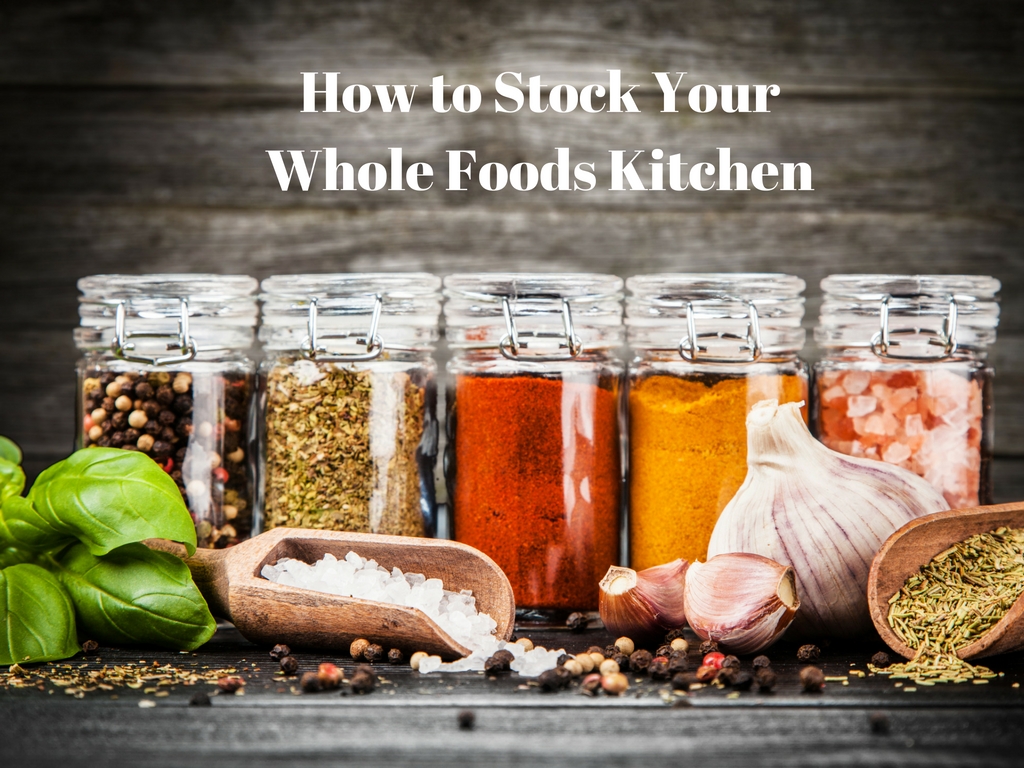How to Stock Your Whole Foods Kitchen
Stocking a Whole Foods Kitchen isn’t too much different than stocking food for eating Gluten Free and Dairy Free. You will want to buy organic, GMO-free, on sale, in season and learn to read labels. It’s easiest to just get rid of the food pantry items that are not on your food list and start fresh. The suggestions below will help you get started.
The Dirty Dozen
It can be expensive to buy everything organic. When buying produce, familiarize yourself with the Dirty Dozen which have tested positive for over 47 different chemicals! The following Dirty Dozen should be bought ORGANIC if at all possible:
- Strawberries
- Apples
- Nectarines
- Peaches
- Celery
- Grapes
- Cherries
- Spinach
- Tomatoes
- Sweet bell peppers
- Cherry tomatoes
- Cucumbers
CLEAN 15
The Clean 15, have limited traces of pesticides and are listed as safe to consume non-organically. These products you can feel more comfortable with not buying organic and buy conventionally.
Avocados
Pineapple
Cabbage
Sweet peas
Onions
Asparagus
Mangoes
Papaya
Kiwifruit
Eggplant
Grapefruit
Cantaloupe
Cauliflower
Sweet potatoes
Mushrooms
When organic is not an option, choose locally grown whenever possible. Many communities have farmer’s markets, food cooperatives or community supported agriculture.
Meat
Grass-fed meat is pricier than conventional meat but it’s important to choose it as much as possible. See where you can cut back in other areas, or add more vegetarian meals to your diet. Conventional meat contains additives, chemicals, hormones and other drugs they are given. The poor diets that feedlot animals are typically subjected to does not provide us with healthy meat.
In the Pantry – Grains
- Rice – brown, black and wild
- Gluten Free Breads – Sprouted breads
- Oats
- Gluten Free Pasta
- Rice
- Quinoa
- Oats
- Popcorn
Canned goods
Vegetable, Chicken or Beef Broths
Diced tomatoes
Salsa
Raw nuts (if you live in a warm climate, you may want to refrigerate or freeze these)
and Nut butters
Canned wild-caught salmon and tuna
Olives
Dried, unsweetened and un-sulfured fruit
Beef jerky
Extra virgin olive oil ( EVOO )
Coconut oil
Organic spices
– a wide variety helps
Refrigerator
Free-range eggs and chicken, organic
Grass-fed beef
Deli meat (Applegate deli meats are popular on a whole foods diet)
Bacon
Mayo (homemade is best but if you are unable to do this look for Paleo brands)
Produce
Kale
Spinach
Super greens
Watercress
Arugula
Romaine lettuce
Broccoli
Sweet potatoes
Potatoes (organic only)
Carrots
Onions
Garlic
Apples
Avocado
Blueberries
Lemon
Lime
Oranges


Thanks for the great information. i really need to start eating better.
I always try to buy the dirty dozen organic, and potatoes as well.
This is some great information. My sister and I are starting a healthier eating plan. This is alot of information I didn’t know. Thank you so much for sharing
This is a great list. I’d love to try whole foods eating. Thanks for posting!
Informative Articles that everyone will be enlightened specially those diet food watchers for fruit and certain vegetables. thanks for sharing.
Great information. I am always trying to buy organic, but some produce is really hard to find. Now that mushrooms might be GMO’s I won’t eat non-organic mushrooms either. During the summer we grow our own food, but winters get hard. Thanks for the information.
I didn’t realize how many chemicals that are in fruit and certain vegetable. More overwhelming amount than I expected.